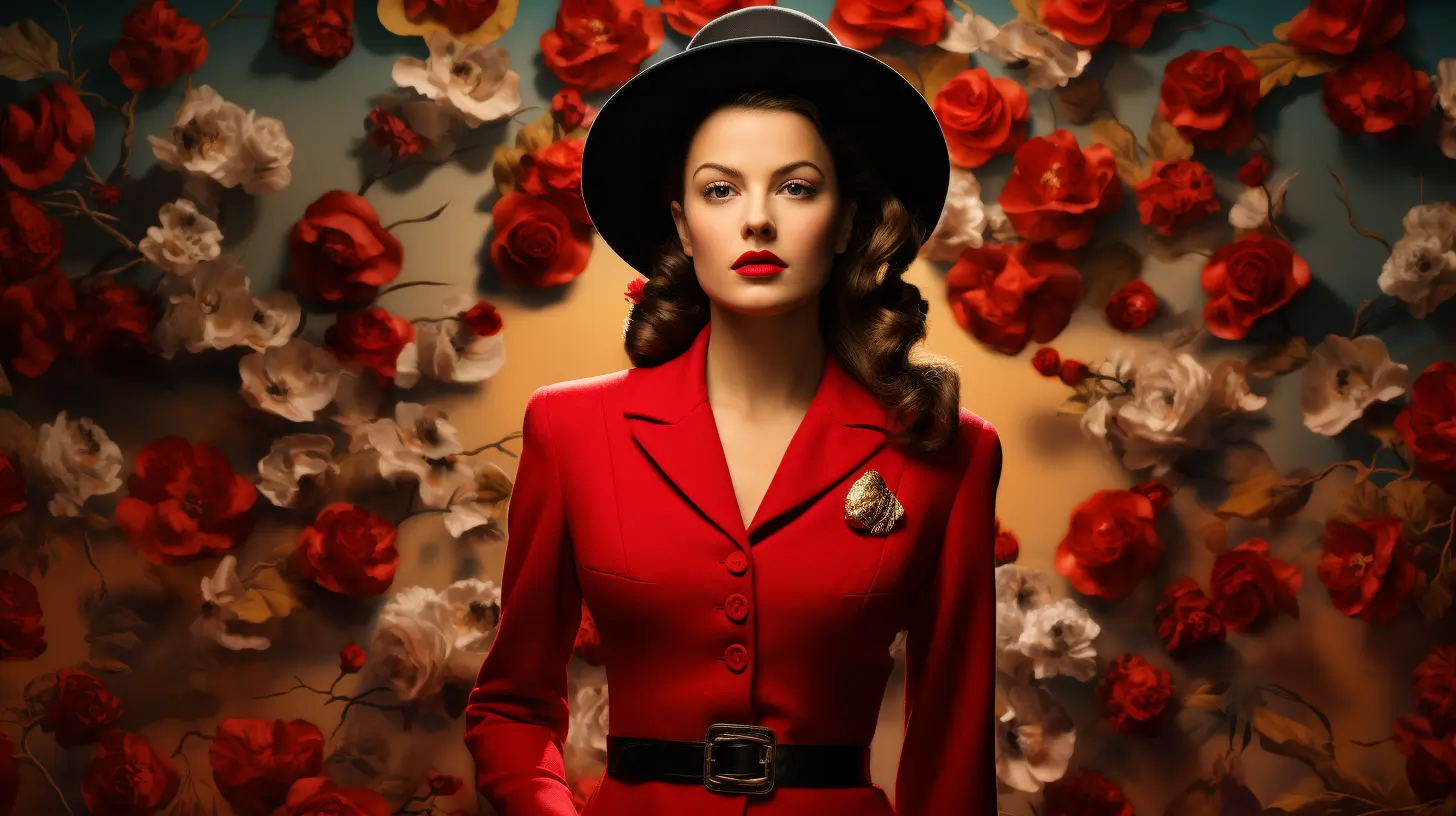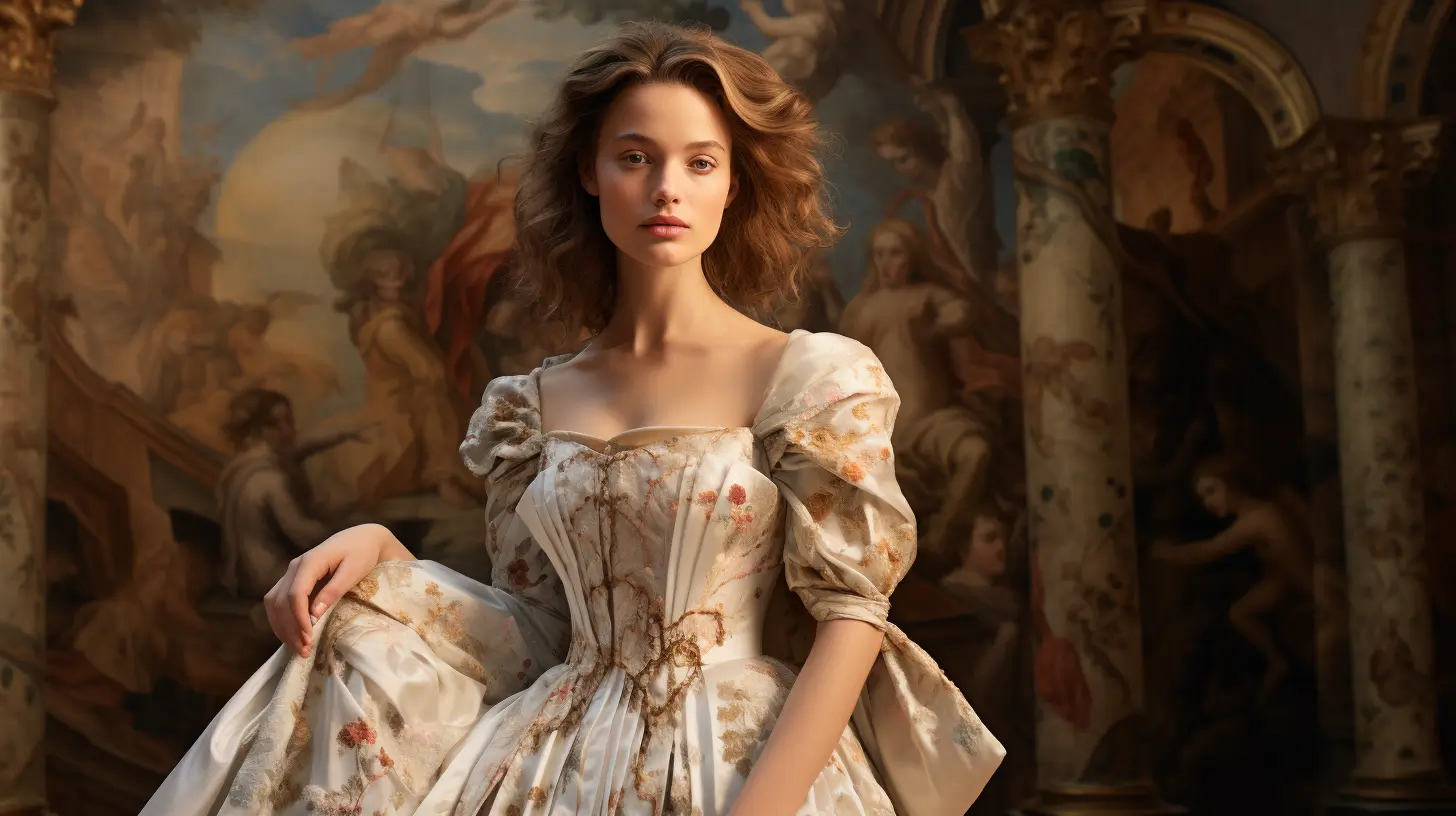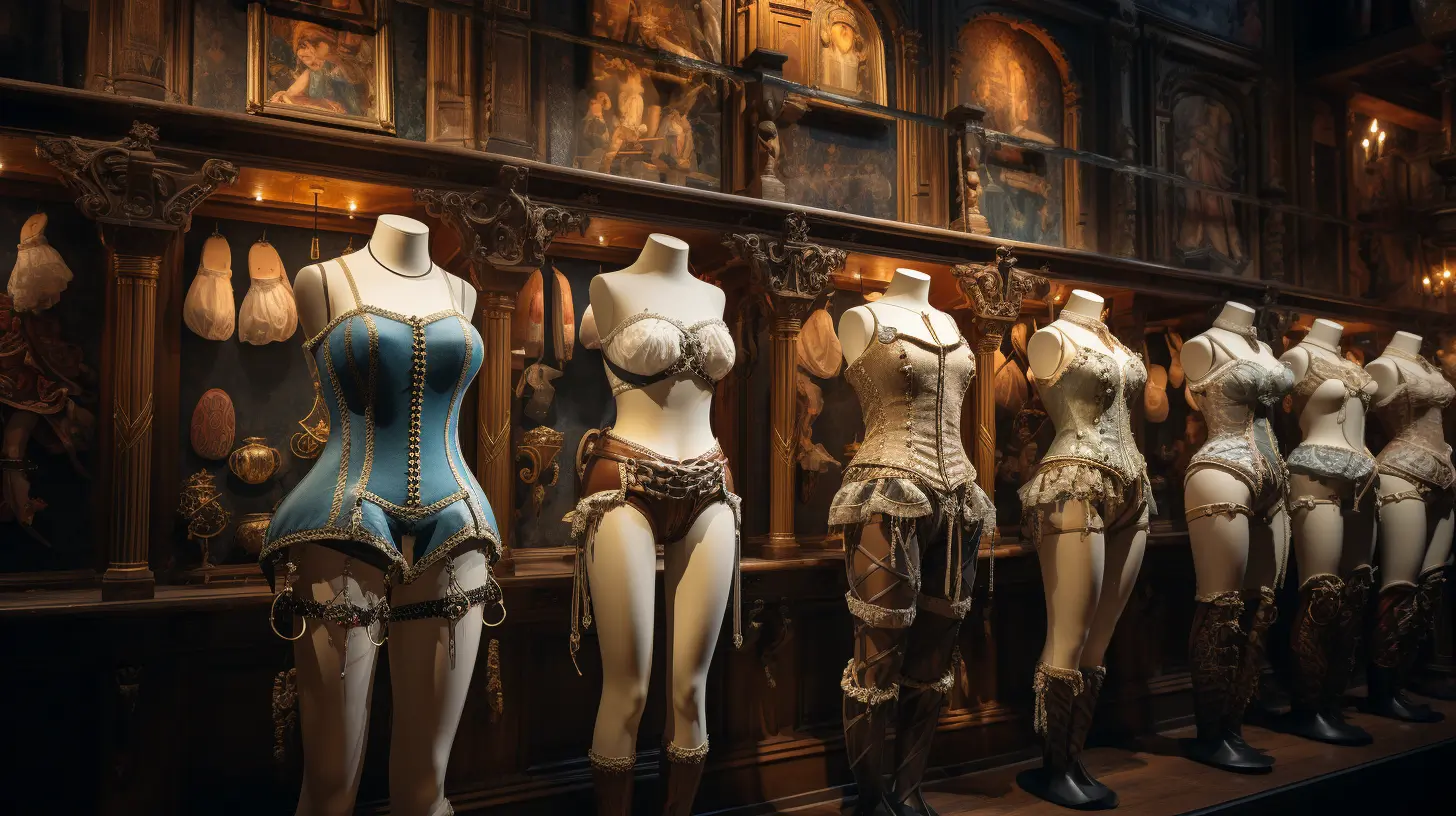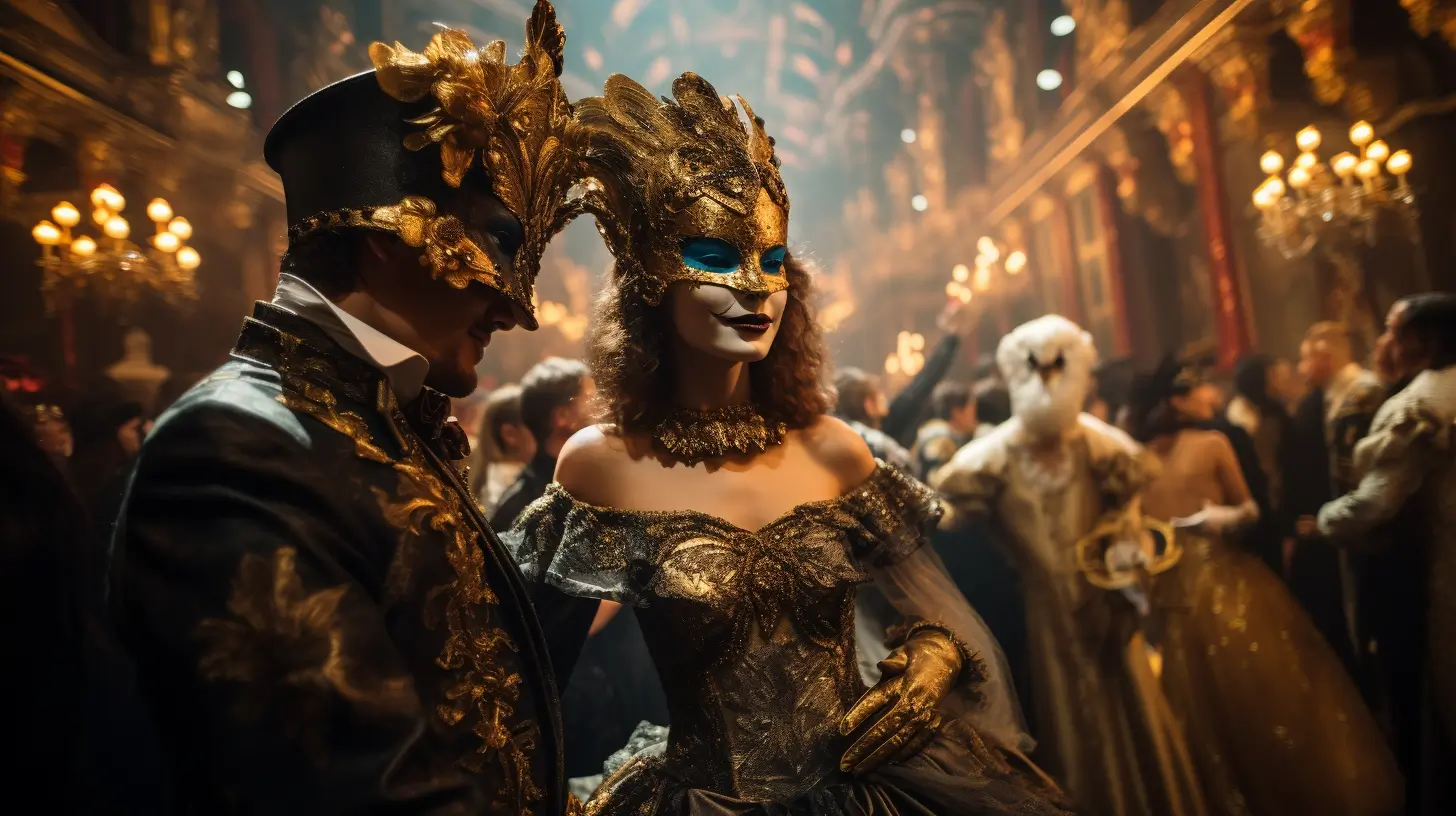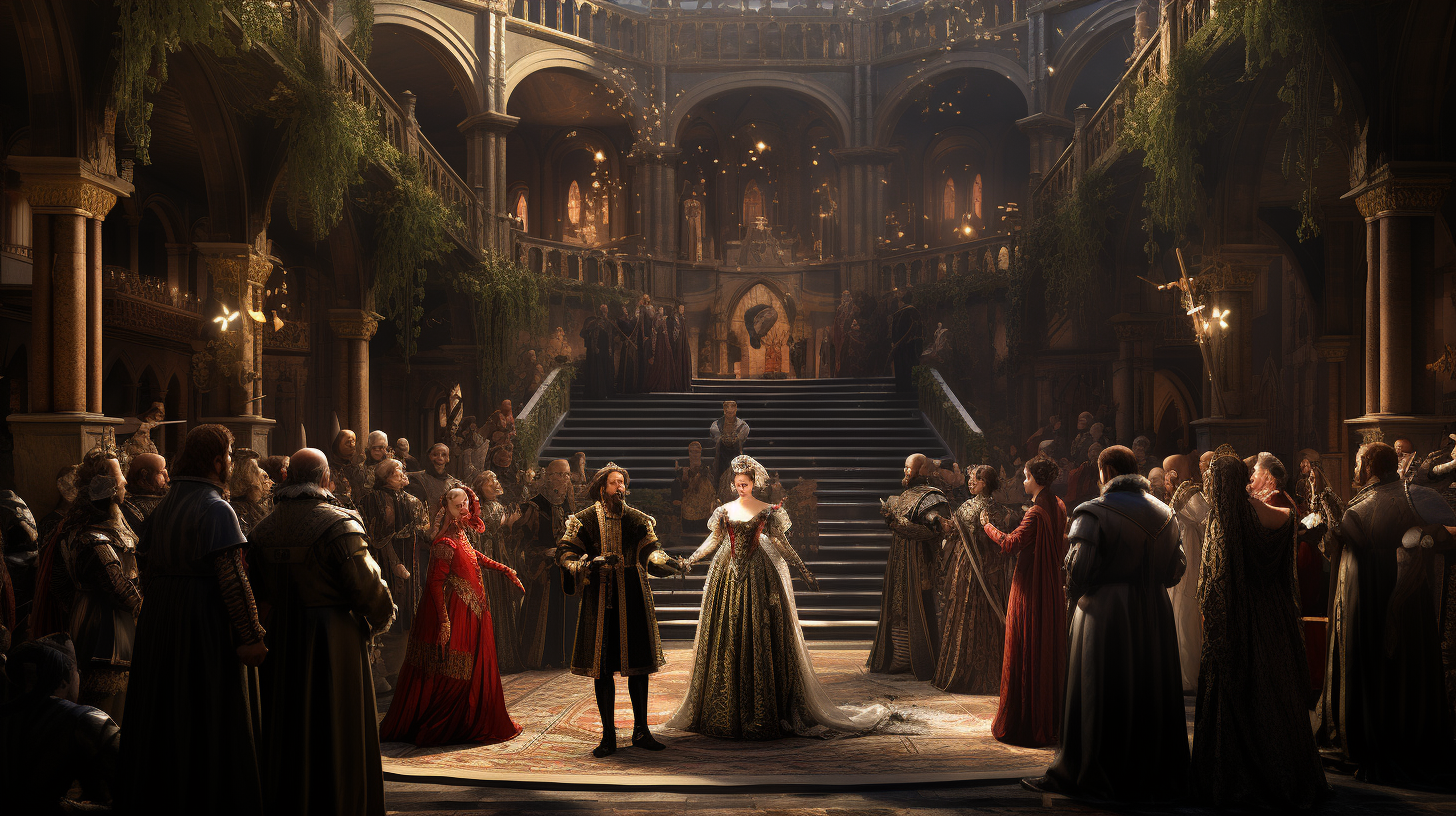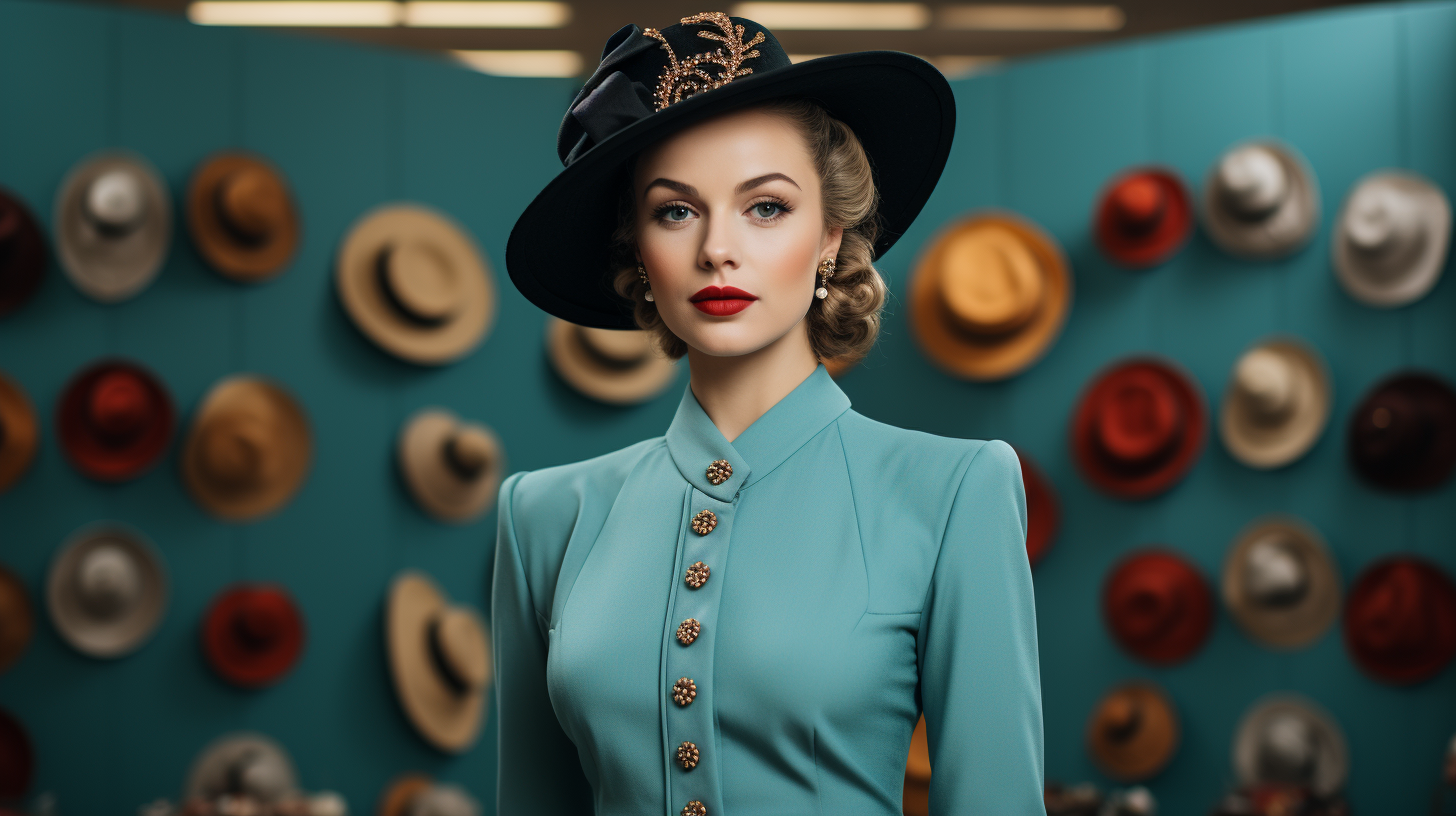
Accessorizing Through Adversity: 1940s Fashion Accessories.
1940s Fashion Accessories: A Creative Revolution Amidst Hardship
In the 1940s, the world was navigating through a tempestuous era. With the shadows of World War II looming large, the challenges and constraints were palpable. But, like a magician pulling a rabbit out of a hat, the fashion world conjured up a realm of creativity and resourcefulness that would forever change the way we perceive accessories.
In a world dominated by wartime austerity, where rationing was the order of the day, the realm of fashion had to adapt, improvise, and innovate. The 1940s, an era of uncertainty and resilience, saw the emergence of fashion accessories that would not only adorn the bodies of those who wore them but also tell tales of personal expression and determination.
Accessories, small in size but mighty in impact, became the means through which individuals could make a statement, express their individuality, and maintain a semblance of style and elegance amidst adversity. Whether it was a simple brooch that added a touch of sparkle to a plain dress or a carefully tied scarf that brought warmth and sophistication, these accessories were more than embellishments—they were symbols of hope and defiance.
In the following pages, we will embark on a journey through time, exploring the world of 1940s fashion accessories. From brooches that shimmered with resilience to hats that crowned the spirit of perseverance, we will delve deep into the significance of these pieces in an era marked by uncertainty and change.
So, buckle up and fasten your seatbelts, dear readers, as we prepare to take a thrilling ride through the enchanting world of 1940s fashion accessories. This is a journey where creativity thrived against all odds, where style emerged from the crucible of hardship, and where accessories became not just adornments, but storytellers of an era like no other.
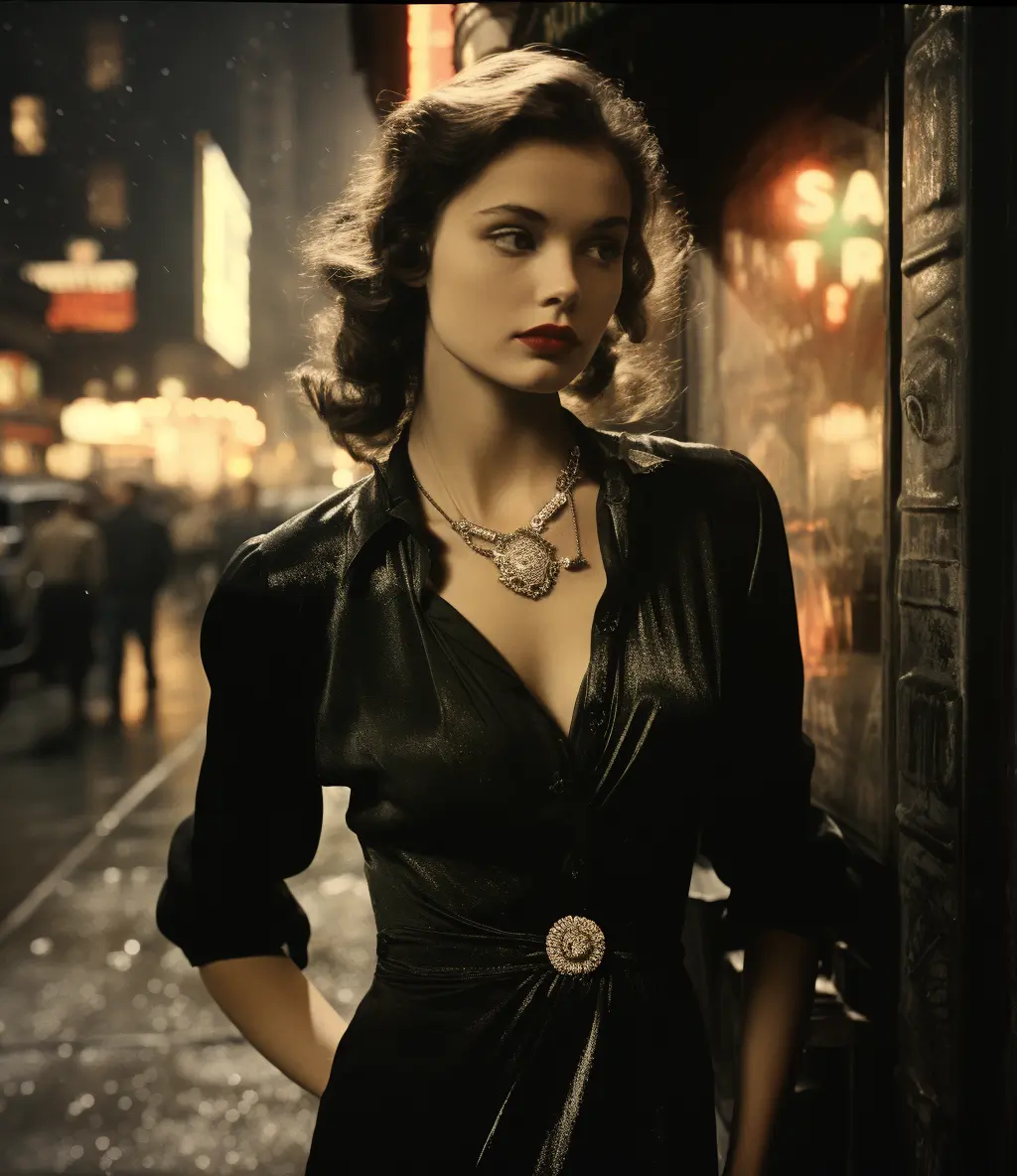
Brooches: Unveiling the Intricate Evolution
In a world torn by turmoil, brooches emerged as the unsung heroes of fashion during the 1940s. Much like a finely crafted dish, these small yet impactful accessories went through a transformation that mirrored the era’s challenges and ingenuity. As we dissect the world of brooches in the 1940s, you’ll come to understand that they were far more than just decorative pins.
The Evolution of Brooches
Picture this: A world where materials were rationed, and luxuries were scarce. Yet, in the midst of such constraints, the humble brooch evolved in ways that were nothing short of astonishing. From its early origins as a functional item used to fasten clothing, the brooch took on new life in the 1940s.
Brooches metamorphosed into intricate pieces of art and symbolism. Craftsmen adapted, creating designs that embodied hope, patriotism, and a dash of escapism. They were no longer mere functional objects; they became powerful symbols of personal expression.
Materials and Designs
In a world defined by scarcity, materials became precious. Brooches, once adorned with opulent gemstones, transitioned to more modest but equally captivating materials. Pins crafted from Bakelite, wood, and even paper were not uncommon.
The designs of brooches became a canvas for creativity. From delicate floral motifs to patriotic emblems, every piece told a unique story. The innovation lay not in the value of the materials but in the craftsmanship and meaning behind each design.
How Brooches Were Worn
Fashion in the 1940s was about making the most of what was available. Brooches, therefore, were worn with purpose. They adorned lapels, cardigans, and even the brims of hats, breathing life into otherwise understated ensembles. Each placement conveyed a different sentiment—perhaps a message of hope or a show of solidarity.
Brooches became conversation starters, allowing wearers to connect and share stories through these tiny, shimmering statements. They were not just fashion accessories; they were vessels of memory and emotion.
Brooches in Popular Culture
Hollywood, with its captivating narratives, played a significant role in showcasing brooches as icons of the era. Leading ladies of the silver screen donned brooches that became synonymous with their characters. Think of Ingrid Bergman in “Casablanca,” elegantly sporting a brooch that whispered of love and sacrifice.
The influence of brooches extended beyond the movie screens. They became collectible items, treasured by those who recognized their historical and sentimental value. Even today, brooches from the 1940s continue to captivate collectors and enthusiasts alike.
Image Description:
Imagine a close-up of a lapel adorned with a brooch from the 1940s. The brooch is a delicate, handcrafted piece, showcasing intricate details that reflect the era’s craftsmanship. Its design features a combination of patriotic symbols and natural elements, symbolizing unity and hope. The soft lighting highlights the brooch’s shimmering surface, evoking a sense of nostalgia and resilience. In the background, a faint silhouette of a wartime cityscape adds depth to the image, reminding viewers of the historical context in which these brooches thrived.
Hats: The Toppers That Defined an Era
Ah, the hats of the 1940s. If the brooches were the understated jewelry, hats were the grand statement pieces of the era. Like a chef’s signature dish, they added flair and personality to outfits, leaving an indelible mark on the fashion landscape of the time.
Hat Styles of the 1940s
The 1940s witnessed a spectacular array of hat styles. Think of it as a culinary journey through diverse flavors and textures. From the elegant cloche hats that snugly hugged the head to the wide-brimmed picture hats that exuded drama and opulence, there was a hat for every occasion.
Hats weren’t just accessories; they were a reflection of the wearer’s personality and social standing. Women chose their hats meticulously, matching them to their outfits and the tone of the day. It wasn’t just about what you wore but how you wore it.
Role of Hats in Fashion
In the fashion world, hats were the icing on the cake. They completed the ensemble, transforming a simple dress into a head-turning look. Hats had the power to elevate a person’s style, and they were often used to convey a sense of sophistication and grace.
The 1940s saw hats becoming an essential part of daily life. Women rarely left their homes without one. It wasn’t just about looking good; it was about embodying a sense of dignity and pride during a time of adversity.
DIY Hat Decorations
In the midst of rationing and limited resources, women got creative with their hats. This was akin to experimenting with limited ingredients to create a delicious dish. DIY hat decorations became a trend, with women adding their personal touch to their headwear.
Using scraps of fabric, feathers, and even repurposed brooches, women crafted unique hat embellishments. These DIY creations not only showcased resourcefulness but also allowed individuals to express their individuality.
Iconic Hat Moments
Much like memorable dining experiences, the 1940s had its share of iconic hat moments. Think of the femme fatale in a film noir, her face half-hidden by a wide-brimmed hat, casting a mysterious allure. Or the image of Rosie the Riveter, with her polka-dot headscarf that symbolized strength and determination.
These hats were more than mere accessories; they were symbols of an era marked by resilience and spirit. They adorned the heads of women who faced challenges head-on and did so with style.
Image Description:
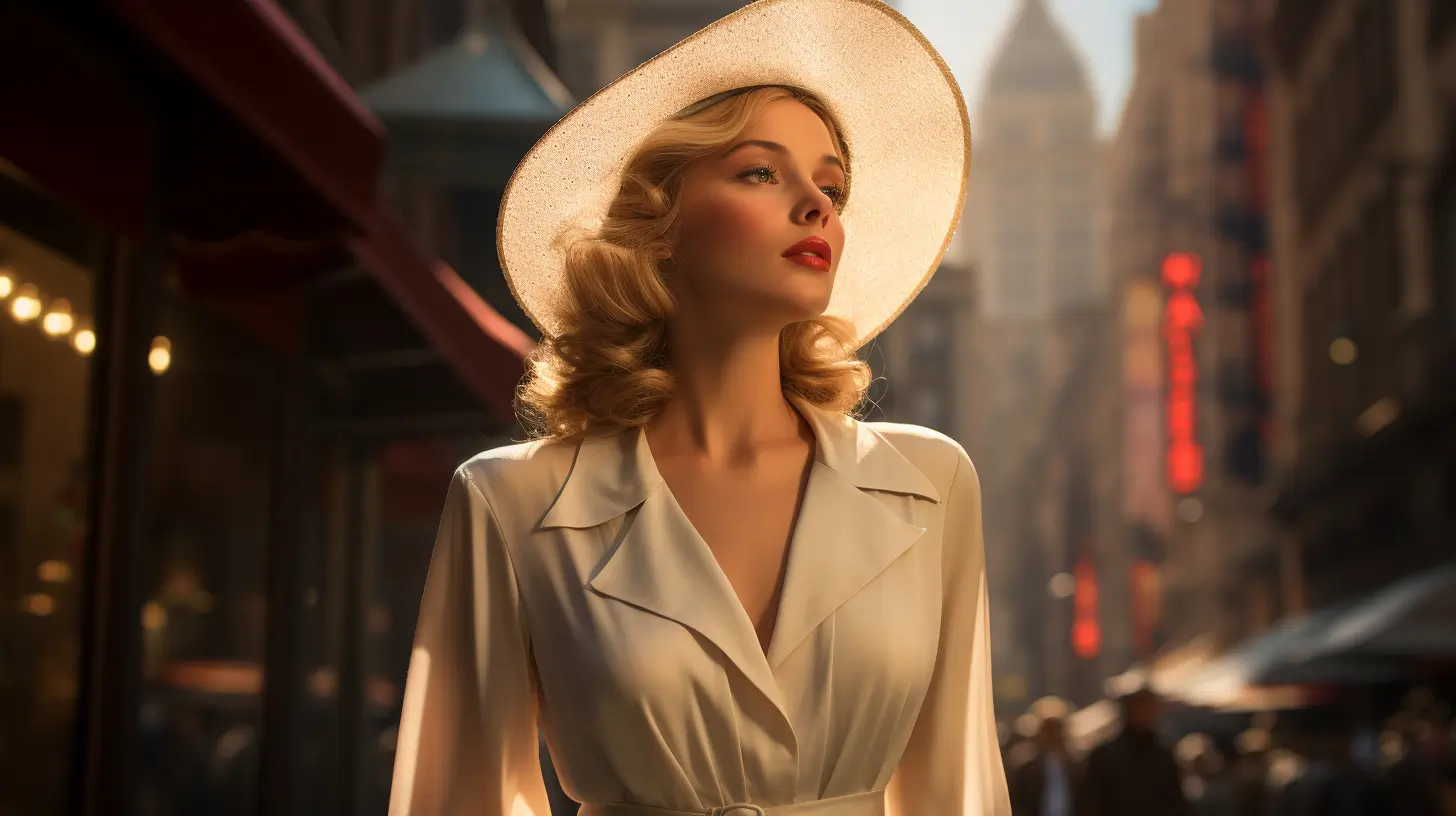
Stockings: Weaving Elegance in Times of Adversity
In the 1940s, women faced a unique dilemma. Just like a seasoned explorer navigating treacherous terrain, they had to balance utility and style in their everyday lives. Stockings, an often-overlooked accessory, played a pivotal role in this delicate dance between practicality and elegance.
Utility Stockings during WWII
World War II ushered in a period of austerity, and this extended to fashion as well. Silk, the traditional material for stockings, was redirected towards the war effort. Women, much like resourceful chefs making do with limited ingredients, had to find alternatives.
Utility stockings, made from nylon and rayon, became the norm. These stockings were durable, affordable, and easy to maintain. While they lacked the luxurious feel of silk, they were a practical choice for everyday wear. They were a symbol of resilience, much like a hearty meal that sustains you during challenging times.
The Glamour of Seamed Stockings
Amidst the challenges of wartime, fashion didn’t fade away; it adapted. Seamed stockings, with their iconic back seams, emerged as a beacon of glamour and sophistication. These stockings added a touch of allure to any outfit, much like a well-presented dish that delights both the eyes and the palate.
Seamed stockings weren’t just about aesthetics; they were a symbol of determination and attention to detail. Women meticulously drew the seams with eyeliner, turning a practical accessory into a statement of elegance. It was a reminder that even in the darkest of times, style could still shine through.
Fashioning Stockings with Limited Resources
Creativity flourished in the face of scarcity. Women didn’t settle for plain stockings; they personalized them. Fashioning stockings with limited resources became an art form, as women used fabric paint and embroidery to add flair and individuality to their hosiery.
Patterns, flowers, and patriotic symbols adorned stockings, turning them into canvases of expression. These personalized touches were like garnishes on a dish, elevating the overall experience.
Post-War Stocking Innovations
With the end of World War II, silk stockings made a triumphant return. The post-war era saw innovations like the introduction of seamless stockings and the use of stretch materials. Women could once again enjoy the luxury of silk, and stockings became synonymous with elegance.
These innovations represented a new era of hope and prosperity, much like a vibrant and innovative culinary scene emerging after difficult times. Stockings were no longer just a necessity; they were a celebration of freedom and style.
Image Description:
Imagine a close-up image of a woman’s legs, elegantly crossed. She wears a pair of seamed stockings, and the back seam runs straight and true, a testament to meticulous attention to detail. The stockings are made of durable nylon, subtly glistening in the soft light. A delicate pattern of flowers and patriotic symbols is painted along the calf, showcasing the personal touch added to them. The image exudes an air of sophistication and resilience, capturing the essence of 1940s stocking fashion.
Scarves: A Versatile Touch of Elegance
Picture the 1940s. The world was in turmoil, yet in the midst of chaos, fashion emerged as a beacon of resilience and creativity. Scarves, often underestimated, were the unsung heroes of the era—adding a dash of style and versatility to everyday life.
Scarf Styles of the 1940s
Scarves were a canvas for personal expression in the 1940s. Like an artist selecting colors for a masterpiece, women carefully chose scarf styles that reflected their personalities and the mood of the day. The range of scarf styles was as diverse as the women who wore them.
From the elegant silk squares that draped gracefully around the neck to the practical headscarves that shielded hair from the elements, scarves were a staple in every woman’s wardrobe. Much like a chef experimenting with various ingredients, women experimented with different scarf styles to create unique looks.
Scarves as Symbols of Unity
During wartime, scarves took on a deeper meaning. They became symbols of unity and solidarity. Women on the home front would knit scarves for soldiers overseas, sending not just warmth but also a message of support and hope.
Scarves also played a role in rallying communities. Women would wear scarves in patriotic colors, showcasing their dedication to the war effort. In a world torn apart by conflict, scarves brought people together, much like a communal meal that fosters bonds.
Creative Scarf Knots
The 1940s saw an explosion of creativity when it came to scarf knots. Women didn’t just drape scarves casually; they tied them in intricate knots and folds, turning a simple accessory into a work of art.
Creative scarf knots added flair and personality to outfits. They were like the finishing touch on a dish, transforming it from ordinary to extraordinary. Scarves were knotted into bows, wrapped around the head like turbans, or elegantly draped over the shoulders, creating a sense of drama and style.
Starlets and Scarves
Hollywood starlets played a significant role in popularizing scarves. These leading ladies weren’t just fashion icons; they were trendsetters. Think of iconic images of stars like Audrey Hepburn and Ingrid Bergman, their scarves adding an air of sophistication to their on-screen personas.
Scarves became synonymous with glamour, and women across the globe looked to these Hollywood icons for inspiration. Scarves were no longer just accessories; they were statements of elegance and allure.
Image Description:
Imagine a vintage-inspired fashion photograph capturing the essence of the 1940s. A stylish woman stands on a bustling city street, her headscarf elegantly knotted, framing her face with a touch of nostalgia. The scarf, made of luxurious silk, flows gracefully in the breeze, conveying a sense of elegance and resilience. In the background, a backdrop of a wartime-era cityscape adds depth to the image, reminding viewers of the historical context in which scarves thrived. The scene is bathed in sepia tones, evoking a sense of nostalgia for a bygone era filled with elegance and determination.
Gloves: A Touch of Elegance in Every Gesture
Let’s talk about gloves, those elegant accessories that graced the hands of women in the 1940s. In a world where practicality was often a necessity, gloves stood out as symbols of grace and refinement, much like a perfectly executed dance move.
Glove Styles and Lengths
The 1940s saw an array of glove styles and lengths. It was like a fashion menu with options to suit every occasion. From short wrist-length gloves that were practical for everyday wear to long opera-length gloves that added a touch of drama, women had choices.
Glove styles weren’t just about fashion; they were about making a statement. The choice of gloves conveyed a message. A pair of delicate lace gloves could speak of femininity and romance, while leather gloves exuded sophistication and practicality.
Gloves and Practicality
Gloves, in the 1940s, weren’t just for show. They served practical purposes, protecting hands from the elements. Much like a seasoned traveler equips themselves with the right gear for the journey, women donned gloves that suited their daily activities.
During wartime, utility gloves made from durable materials became essential. These gloves were designed for work and were worn by women who contributed to the war effort. They were a symbol of the strength and resilience of women during challenging times.
Gloves as Fashion Statements
Gloves weren’t just functional; they were fashion statements. They were like the finishing touch on a dish, elevating the entire ensemble. Women used gloves to add a pop of color, texture, or contrast to their outfits.
The act of putting on gloves was a ritual in itself, a gesture of refinement and poise. It was a way to show attention to detail and to express one’s sense of style. Gloves were more than mere accessories; they were extensions of a woman’s personality.
The Iconic Black Glove
No discussion of gloves in the 1940s would be complete without mentioning the iconic black glove. This timeless accessory was synonymous with elegance and mystery, much like a well-crafted suspense novel.
Black gloves had a universal appeal, whether they were short and simple or long and dramatic. They adorned the hands of starlets and everyday women alike, adding an air of sophistication to any outfit. The black glove was more than an accessory; it was an embodiment of style and allure.
Image Description:
Visualize a close-up of a woman’s hands, elegantly gloved in a pair of long, black satin gloves. The gloves extend past the wrist, creating a sense of drama and sophistication. The fabric glistens in the soft light, highlighting the meticulous stitching and attention to detail. The woman’s hands are posed gracefully, as if in the middle of an elegant dance. The image exudes an air of refinement and timeless beauty, capturing the essence of 1940s glove fashion.
Handbags: Where Utility Meets Style
Now let’s dive into the world of handbags, the ever-present companions of women in the 1940s. These practical yet stylish accessories were more than just carriers of essentials; they were reflections of individuality and a testament to resourcefulness.
Evolution of Handbag Designs
The 1940s saw an evolution in handbag designs, much like the transformation of a dish from its humble ingredients to a work of culinary art. Handbags went from being primarily functional to becoming statements of style.
The boxy, structured bags of the early 1940s gave way to more streamlined and versatile designs. Materials such as leather, straw, and even fabric were used to create a range of handbag styles. Women had options, just like a diner choosing from a diverse menu.
Role of Handbags in the 1940s
Handbags in the 1940s served a dual purpose, much like a multitasking chef in a bustling kitchen. They carried not only the practical essentials but also the hopes and dreams of their owners. Women’s lives were becoming busier, and handbags were there to assist.
During the war, utility became a key consideration. Handbags were designed to be functional, with compartments for ration books and essentials. They were like the reliable tools in a chef’s kitchen, helping women navigate their daily routines.
Handbags as Personalized Accessories
Despite the emphasis on utility, handbags remained personal accessories. Women didn’t just carry bags; they curated them. They added personal touches, such as hand-painted designs or embroidered initials, making each bag unique.
Handbags became a canvas for self-expression, much like an artist’s palette. They were more than just accessories; they were extensions of the women who carried them. The choice of a handbag spoke volumes about a woman’s personality and style.
Famous Handbag Moments
In the world of fashion, handbags have had their moments of fame. They’ve graced the arms of iconic figures and become symbols of style. Think of the classic Kelly Bag, named after Grace Kelly, or the timeless elegance of the Chanel 2.55.
Handbags became more than just practical items; they were investments in style and luxury. These famous handbags added an air of sophistication to the women who carried them and left an indelible mark on the world of fashion.
Image Description:
Imagine a scene set in a stylish 1940s setting, a woman elegantly holding a handbag. The handbag is a vintage piece with a streamlined design, made from high-quality leather. It features subtle hand-painted floral patterns that add a touch of personalization. The woman’s handbag is the focal point of the image, capturing the essence of 1940s style and individuality. The soft lighting accentuates the texture of the leather and the delicate details of the hand-painted design. In the background, a glimpse of a bustling city street adds depth and context to the scene, evoking the spirit of the era.
Jewelry: Sparkling Moments in Challenging Times
Let’s talk about jewelry, those glimmering ornaments that adorned the women of the 1940s. In an era where resources were scarce, jewelry became more than just decorative; it was a reflection of resilience and creativity, much like a memorable dish created with limited ingredients.
Costume Jewelry in the 1940s
With precious metals and gemstones in short supply during the war, costume jewelry took center stage. Much like a masterful illusionist creating magic with simple props, costume jewelry offered the allure of luxury without the extravagant cost.
Costume jewelry came in a variety of styles and materials. From elegant faux pearl necklaces to brooches adorned with colorful rhinestones, these pieces added a touch of glamour to everyday life. They were like well-crafted stage props that transformed the wearer into a star.
Adapting to Metal Shortages
The metal shortages of the 1940s forced jewelers to get creative. Like a chef adapting to a limited pantry, they turned to alternative materials. Gold and silver were replaced with base metals like brass and copper. The result was a fusion of artistry and resourcefulness.
Jewelry designs became intricate, featuring detailed metalwork. Brooches, earrings, and bracelets showcased craftsmanship that rivaled fine jewelry. These pieces were more than adornments; they were wearable art.
Sentimental Value of Jewelry
In a world marked by uncertainty, jewelry took on sentimental value. Women held on to pieces that had been passed down through generations. Wedding rings became symbols of love and hope, much like a cherished family recipe that brings comfort in difficult times.
Jewelry was a source of emotional connection, reminding wearers of loved ones far away or of brighter days ahead. These pieces carried stories and memories, adding depth to their sparkle.
Jewelry Trends of the Era
Despite the challenges, jewelry trends continued to evolve in the 1940s. Like fashion itself, jewelry was a reflection of the times. As the war ended, designs shifted towards more streamlined and minimalist styles, much like a chef simplifying a dish to its core flavors.
Pearls became a symbol of elegance and sophistication, while the playful charm bracelet emerged as a whimsical accessory. These trends were a response to changing societal values, and jewelry adapted accordingly.
Image Description:
Visualize a close-up image of a woman’s hand adorned with a vintage 1940s bracelet. The bracelet is a delicate piece with intricate metalwork, showcasing ornate details that reflect the era’s craftsmanship. Faux pearls are interspersed with small rhinestones, adding a touch of glamour to the piece. The soft lighting highlights the texture of the metal and the delicate shimmer of the pearls. The woman’s hand is posed gracefully, reminiscent of a dancer’s hand in mid-movement. In the background, a subtle reflection of a wartime cityscape adds depth and context to the image, evoking the spirit of the era.
Shoes: Where Practicality Meets Style
Let’s step into the world of 1940s footwear, where shoes were more than just a means of transportation; they were statements of resilience and individuality. In an era marked by challenges, women found a way to walk with grace and style.
Shoe Styles and Materials
The 1940s saw a range of shoe styles and materials, much like a diverse menu offering various flavors and textures. From the practicality of oxfords and loafers to the elegance of pumps and peep-toes, women had options to suit every occasion.
Materials were adapted to the times, with leather and rubber being the primary choices. The designs were streamlined, reflecting the practicality required during wartime. Shoes were like well-crafted tools, designed for both comfort and style.
Shoes and War Rationing
During World War II, shoe rationing became a reality. Like a chef working with a limited ingredient list, women had to make do with fewer pairs of shoes. Quality over quantity became the mantra, and shoes were carefully chosen to be versatile and long-lasting.
Utility shoes, often referred to as victory shoes, were designed with rationing in mind. They were functional and sturdy, meant to withstand the challenges of everyday life. These shoes represented the resilience and adaptability of women during wartime.
Heels and Wedges in the 1940s
Despite the constraints of the era, heels remained a symbol of feminine elegance. Women found creative ways to incorporate height into their shoes. Wedges and platform heels became popular, providing both style and comfort, much like a well-balanced dish that satisfies both the palate and the eye.
Heels added an air of sophistication, and women wore them proudly, even as they navigated the challenges of daily life. These heels were like a dancer’s shoes, allowing women to gracefully move through the world.
Iconic 1940s Shoe Moments
The 1940s had its share of iconic shoe moments. Think of the classic Mary Jane shoes, with their round toes and delicate straps, epitomizing youthful charm. Or the peep-toe pumps that added a touch of allure to women’s outfits.
Shoes became more than just functional items; they were expressions of style and personality. They were like brushstrokes on a canvas, adding depth and character to an ensemble.
Image Description:
Visualize an image of a woman’s feet elegantly clad in a pair of 1940s platform wedges. The shoes are made of polished leather with intricate stitching details, reflecting the craftsmanship of the era. The wedges provide height and stability, and the round toes offer comfort. The woman’s feet are poised as if in mid-step, capturing the essence of movement and style. The soft lighting highlights the texture of the leather and the shadows created by the platform heels. In the background, a glimpse of a vintage city street adds context to the image, evoking the spirit of the 1940s.
Belts: Cinching the Look
Now, let’s explore an often-overlooked accessory, belts, which played a crucial role in shaping the fashion of the 1940s. Much like a skilled mixologist adding the finishing touch to a cocktail, belts cinched the look and brought outfits together.
Belt Styles and Materials
The 1940s offered a variety of belt styles and materials, providing women with options to tailor their looks. Belts ranged from practical leather varieties to more ornate fabric and metal designs. Each belt was like a brushstroke on a canvas, contributing to the overall composition.
Materials were adapted to wartime constraints, with leather, fabric, and even paper being used. The designs were utilitarian yet stylish, reflecting the spirit of the era. Belts were functional tools for cinching waists, but they also added personality and flair to outfits.
Role of Belts in Silhouette
Belts played a vital role in defining the silhouette of the 1940s. In an era where hourglass figures were prized, belts helped create the illusion of a tiny waist. They were like a sculptor’s tools, shaping the body and enhancing curves.
Wide belts, often worn high on the waist, accentuated the hourglass shape, while narrower belts added a touch of sophistication to dresses and suits. Belts became essential elements of outfit coordination, much like a carefully crafted cocktail garnish that completes the drink.
Belts as Creative Accents
Belts weren’t just utilitarian; they were also creative accents. Women used them to add color and contrast to their outfits. Fabric belts in bold patterns and colors became popular, transforming plain dresses into fashion statements.
Creative buckles and closures became a focus of design, with metalwork and unique shapes adding a touch of individuality. Belts weren’t merely functional; they were expressions of style and personality.
Utility Belts during WWII
During World War II, utility belts took on a practical role, much like a toolbelt for a skilled craftsman. These belts were designed with multiple pockets and compartments to carry essentials. They were essential for women contributing to the war effort.
Utility belts were a symbol of resilience and adaptability, showcasing how fashion adapted to the needs of the times. These belts were a testament to women’s resourcefulness during challenging times.
Image Description:
Imagine an image of a woman gracefully cinching a vintage dress with a wide fabric belt. The belt features a bold, colorful pattern that contrasts beautifully with the dress. The metal buckle is a work of art, with intricate designs and unique shapes. The woman’s posture exudes confidence and style, as she adjusts the belt with a sense of purpose. The soft lighting highlights the textures of the fabric and metal, adding depth to the image. In the background, a glimpse of a wartime cityscape adds context to the scene, evoking the spirit of the era. The image captures the essence of 1940s belt fashion, where practicality met style.
Conclusion: Accessorizing Through Adversity
As we wrap up our journey through 1940s fashion accessories, it’s clear that these adornments were more than just embellishments; they were symbols of resilience, creativity, and individuality. Like the finishing touch on a well-crafted dish, accessories cinched the look and added a unique flavor to the fashion of the era.
In the face of challenges and constraints, women of the 1940s found ways to express themselves through their clothing and accessories. They transformed utility into style and made do with less without sacrificing elegance. Accessories became tools of personal expression, much like the ingredients a chef uses to create a signature dish.
From brooches that shimmered with elegance to shoes that blended practicality and style, each accessory told a story. They were the brushstrokes on the canvas of life during a tumultuous time, adding depth and character to the fashion landscape.
Key Takeaways
- 1940s fashion accessories were versatile and adaptive, reflecting the spirit of the era and the resilience of women.
- Materials and designs evolved to suit the times, from the practicality of utility items to the elegance of statement pieces.
- Personalization and creativity were at the forefront, with women adding their own touches to accessories.
- Sentimental value and emotional connection were woven into the fabric of each accessory, creating enduring memories.
- Accessories were expressions of style and individuality, showcasing adaptability and resourcefulness.
The Enduring Influence
The influence of 1940s fashion accessories can still be seen today. Contemporary fashion continues to draw inspiration from the styles and creativity of that era. From vintage-inspired jewelry to retro shoe designs, the 1940s have left an indelible mark on fashion.
As you explore the world of fashion, consider the lessons from the 1940s. The ability to adapt, to find beauty in simplicity, and to use style as a means of personal expression are timeless principles.
In conclusion, the 1940s were a testament to the power of fashion to adapt and thrive in challenging times. These accessories were more than adornments; they were symbols of strength and creativity. So, whether you’re donning a vintage brooch or a pair of classic pumps, remember the spirit of the 1940s and wear your accessories with pride.
Image Description:
Imagine an image that captures the essence of the 1940s fashion era. In the center, a woman is dressed in a beautifully tailored 1940s outfit, complete with accessories like a brooch, hat, gloves, and elegant shoes. She stands against a backdrop that transitions from the 1940s to the present day, symbolizing the enduring influence of 1940s fashion on contemporary style. The image portrays a sense of timelessness, with the woman as a bridge between eras, showcasing the continued relevance of 1940s fashion accessories in today’s world.